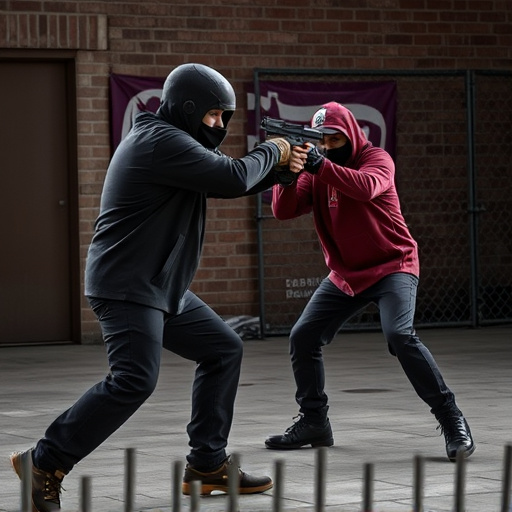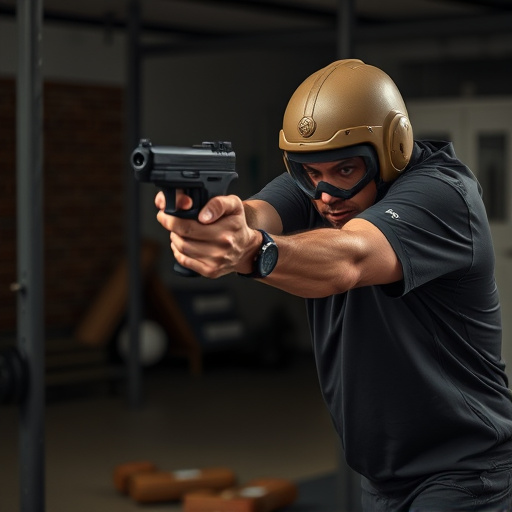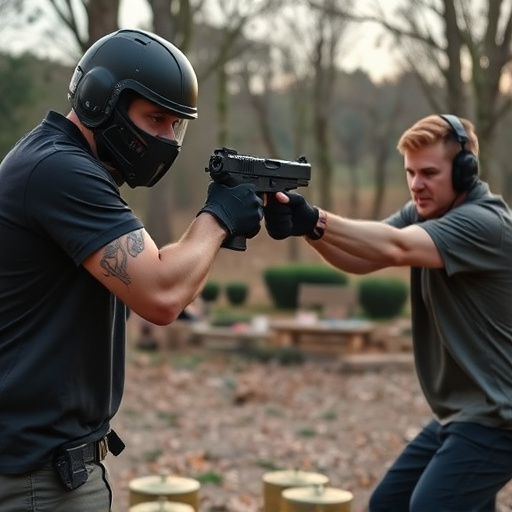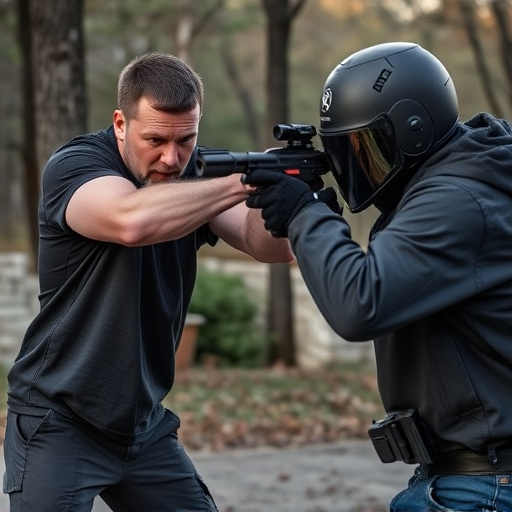Accidental discharges from stun guns or pepper spray can cause harm and legal issues, emphasizing the need to understand their risks and causes. User error, environmental factors, and physical disabilities increase the risk of mishandling. Choosing between these options requires evaluating personal safety needs, considering range, power, ease of use, threat level, and preference. Stun guns offer powerful electric shocks for close defense but limited range, while pepper spray causes temporary blindness and respiratory distress from a distance, requiring correct application. The best choice depends on intended use, environment, and personal preferences.
Accidental discharge of self-defense weapons can have severe consequences. This article explores prevention mechanisms, focusing on stun guns and pepper spray—two popular choices for personal safety. We delve into the underlying causes and risks associated with accidental discharges and compare their features, effects, and suitability. Armed with this knowledge, buyers can make informed decisions, ensuring they acquire the right self-defense mechanism to suit their needs, be it stun guns or pepper spray.
- Understanding Accidental Discharge: Causes and Risks
- Stun Guns vs Pepper Spray: Features and Effects
- Choosing the Right Self-Defense Mechanism: A Buyer's Guide
Understanding Accidental Discharge: Causes and Risks

Accidental discharge, whether it’s from a stun gun or pepper spray, can lead to severe consequences, including injury and legal repercussions. Understanding the causes and risks is a crucial step in choosing between stun guns vs pepper spray. One of the primary reasons for accidental triggers is user error, such as mishandling or improper storage. These devices require careful attention and understanding of their activation mechanisms. For instance, many stun guns use a simple pressure-sensitive trigger, which can inadvertently be activated if not handled correctly, especially in stressful situations.
Additionally, environmental factors play a significant role. Moisture, for example, can interfere with the functionality of both stun guns and pepper spray, increasing the risk of accidental discharge. Moreover, certain physical conditions or disabilities might make users more prone to mistakes. When considering whether to buy a stun gun or pepper spray, it’s essential to evaluate personal safety needs and the potential risks associated with each option, keeping in mind the importance of proper training and maintenance to prevent accidental discharges.
Stun Guns vs Pepper Spray: Features and Effects

Stun guns and pepper spray are both non-lethal self-defense tools, but they operate differently. Stun guns use an electric current to disrupt muscular control, causing the user to temporarily lose balance or strength. This makes them effective for immobilizing an attacker without causing serious harm. On the other hand, pepper spray irritates the eyes and respiratory system, leading to temporary blindness and difficulty breathing. It’s a direct irritant that disorientates and incapacitates the target.
When considering stun guns vs pepper spray: which to buy, factors like range, power, and ease of use come into play. Stun guns typically have a longer reach, but their effectiveness depends on hitting vital areas. Pepper spray, in contrast, is effective from closer ranges, often around 2-3 meters, and can be carried discreetly due to its smaller size. The choice between the two largely depends on personal preference, threat level, and the specific self-defense scenario an individual may face.
Choosing the Right Self-Defense Mechanism: A Buyer's Guide

When considering self-defense options, individuals often grapple with choosing between stun guns and pepper spray—both powerful tools designed to deter potential attackers but offering distinct advantages and disadvantages. Understanding the nuances between these two can be the key to making an informed decision that aligns with your specific needs and preferences.
Stun guns, also known as electroshock weapons, deliver a high-voltage, low-current electrical shock, temporarily incapacitating the target. They are convenient for close-range defense and can stun multiple aggressors at once. However, their range is limited, and they may not be effective in open spaces or against determined attackers. On the other hand, pepper spray causes temporary blindness and breathing difficulties upon impact, providing a safer option from a distance. It offers better mobility and can be used discreetly, but its effectiveness depends on proper application and wind conditions. Considering factors like intended use, environment, and personal comfort levels will guide you in selecting either stun guns or pepper spray as the right self-defense mechanism for your situation.
When it comes to self-defense, choosing the right tool is crucial. Understanding accidental discharge prevention mechanisms and comparing stun guns vs pepper spray can help you make an informed decision. By considering factors like ease of use, effectiveness, and personal preferences, you can select the optimal defense mechanism tailored to your needs. Remember, staying prepared and knowing which to buy in terms of stun guns vs pepper spray is key to ensuring your safety and peace of mind.
